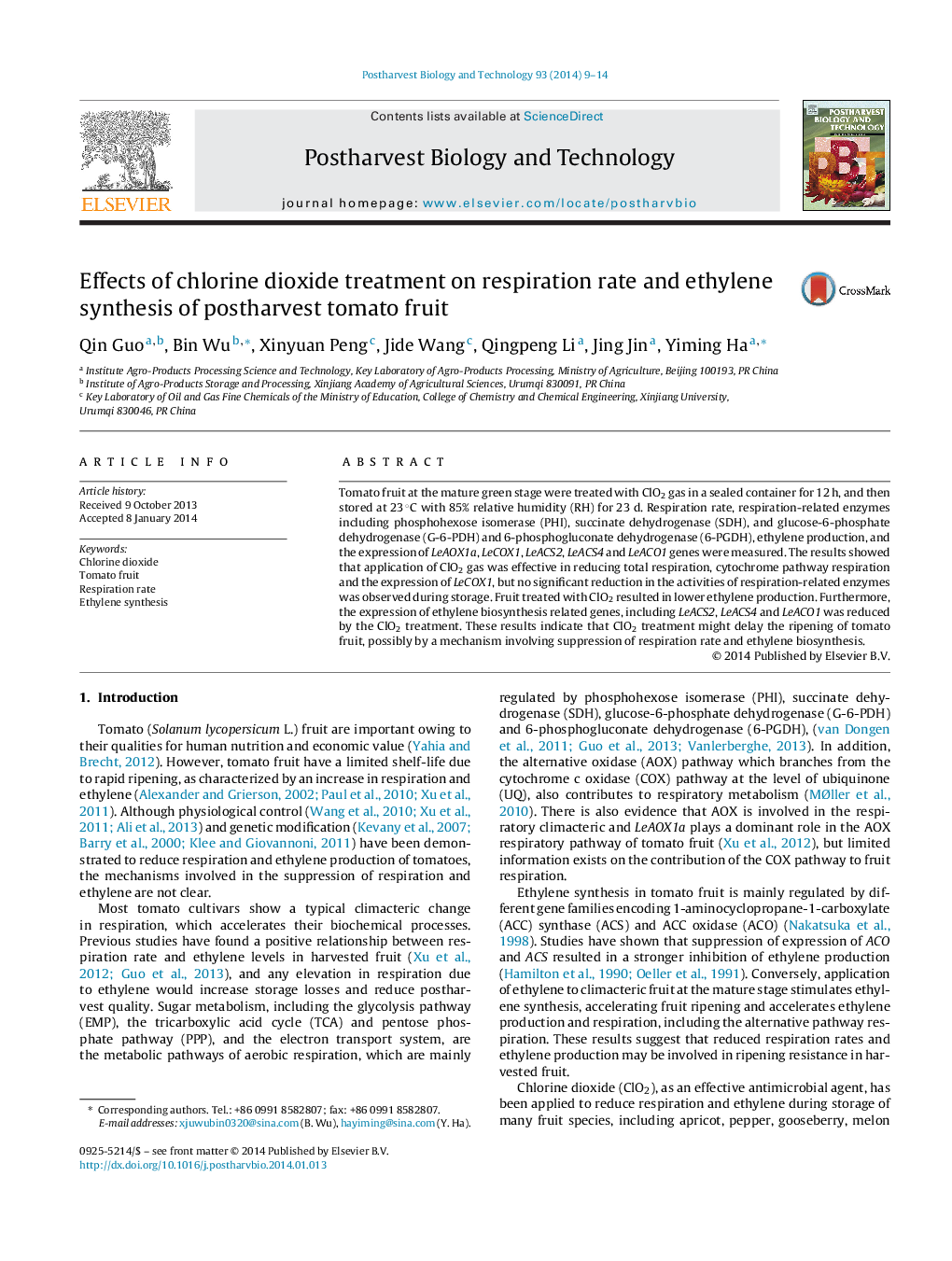| Article ID | Journal | Published Year | Pages | File Type |
|---|---|---|---|---|
| 4518290 | Postharvest Biology and Technology | 2014 | 6 Pages |
•Respiration and ethylene production of tomato in response to ClO2 was evaluated.•Application of ClO2 was effective in reducing the total respiration.•ClO2 treatment reduced cytochrome pathway respiration and the expression of LeCOX1.•ClO2 resulted in lower ethylene production and the expression of related genes.
Tomato fruit at the mature green stage were treated with ClO2 gas in a sealed container for 12 h, and then stored at 23 °C with 85% relative humidity (RH) for 23 d. Respiration rate, respiration-related enzymes including phosphohexose isomerase (PHI), succinate dehydrogenase (SDH), and glucose-6-phosphate dehydrogenase (G-6-PDH) and 6-phosphogluconate dehydrogenase (6-PGDH), ethylene production, and the expression of LeAOX1a, LeCOX1, LeACS2, LeACS4 and LeACO1 genes were measured. The results showed that application of ClO2 gas was effective in reducing total respiration, cytochrome pathway respiration and the expression of LeCOX1, but no significant reduction in the activities of respiration-related enzymes was observed during storage. Fruit treated with ClO2 resulted in lower ethylene production. Furthermore, the expression of ethylene biosynthesis related genes, including LeACS2, LeACS4 and LeACO1 was reduced by the ClO2 treatment. These results indicate that ClO2 treatment might delay the ripening of tomato fruit, possibly by a mechanism involving suppression of respiration rate and ethylene biosynthesis.
